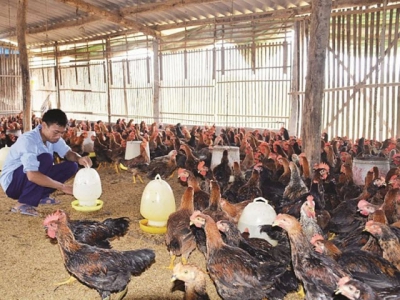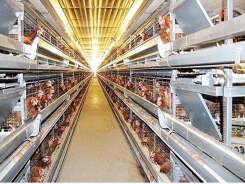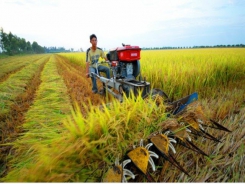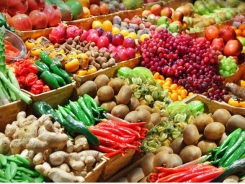Creating a boost for poultry exports

The deep international economic integration has provided many opportunities for the poultry industry to improve its humble export turnover. However, in order to take advantage of the opportunity to create a boost for the export of poultry and poultry products, ensuring biosecurity and good control of diseases are an extremely important factor.
Vietnam's poultry products still have many opportunities to promote exports. Photo: N.Thanh
Excess of strength
According to the Department of Livestock Production (Ministry of Agriculture and Rural Development), in recent years, export of breeds and poultry products recorded positive signs with continuous growth export value. Specifically, in 2016, export turnover reached over US$3.05 million; in 2017 it reached over US$5.58 million and in 2018 reached over US$18.43 million. In the first 3 months of this year, export of poultry and poultry products reached over US$3 million.
In particular, in the period of 2016-2018, poultry breeds were exported from 1.25 to 1.5 million. For processed poultry products for exporting, salted duck eggs maintained about 10-15 million. Processed chicken meat started exporting from September 2017 and reached nearly 8,000 tons in 2018. In addition, Vietnam also exported canned quail eggs, chickens, salted duck egg yolk, boiled salted duck eggs and egg powder.
According to Dr. Nguyen Thanh Son, Chairman of Vietnam Poultry Breeding Association, Vietnam participated in many Free Trade Agreements (FTA), included the Comprehensive and Progressive Agreement for Trans-Pacific Partnership (CPTPP), that will be a great opportunity for the livestock industry to expand the export market for poultry meat and eggs. The potential for expanding scale and increasing the productivity of the industry was still large.
Sharing this point of view, Mr. Nguyen Quoc Toan, Acting Director of Agricultural Product Processing and Market Development Department (Ministry of Agriculture and Rural Development), said that based on production and trade advantages (with FTAs and transport distance), Vietnam's poultry industry could identify the target international markets such as Japan, China and the Philippines. Other potential markets include Saudi Arabia and South Africa. For poultry eggs, Vietnam should focus on the traditional markets of Northeast Asia and Southeast Asia.
"It is necessary to divide the segment when determining the target market for producing and trading poultry products. Specifically, poultry except chickens (ducks, swans, geese) are a group of products that have not been competitive in imports, and are the strength of domestic production. For the rest of the segment, it is necessary to classify products to target different consumers. In particular, products such as chicken breast towards export because the consumers of other countries prefer more, so they have very high prices, the meat of the thighs and chicken wings towards domestic consumers," said Mr. Toan.
Focus on biosafety
In fact, although there have been certain development steps and large opportunities in both domestic and export markets, at present, there still exists many shortcomings in Vietnam. Typically, the poultry industry does not have a synchronous system of State management of livestock breeds from central to local levels. The productivity and quality of seed in livestock production is still limited. The quality of seeds of some hatcheries has not guaranteed quality. The production stages are still lacking cohesion, production has not been linked to slaughtering and processing with market.
Sharing the reality of promoting poultry products export, Mr. Pham Van Dong, Director of Department of Animal Health (Ministry of Agriculture and Rural Development), said that for the processed chicken chain, to enter the Japanese market, Department of Animal Health took two years of negotiations with the Japanese Veterinary Department, Japanese Health Safety Bureau. Department of Animal Health to provide the surveillance results of avian influenza, harmful microorganisms and toxic residues in a closed chain from producing food to slaughtering stage.
Notably, despite being licensed to export to this market, the quality control process was implemented strictly, each shipment when docked must be kept at the port for samples to be taken by the Japanese veterinary agency for checking for pathogens and criteria of antibiotic residues. When products met requirements, they were allowed to be consumed in the Japanese market.
"In order to be able to export poultry products, good control of bird flu and establishment of disease-free areas is very important. In addition, it is necessary to organize control of other microorganisms, remove toxic residues in the products to ensure import requirements of countries, especially high demand countries like Japan and Singapore," Mr. Dong said.
From a business perspective, Mr. Nguyen Quang Hieu, Deputy General Director of De Heus Co., Ltd. (an enterprise exporting processed chicken to the Japanese market) also said that, in order to boost exports in the future, firstly, it must build disease-free areas and the appropriate mechanisms to protect the livestock farms, ensure conditions and standards for the countries' importers.
On promoting production and export of poultry products, Minister of Agriculture and Rural Development, Nguyen Xuan Cuong, said that promoting poultry production must follow planning, not rampant development; focus on raising biosecurity, avoid disease outbreaks in poultry. For each scale of the industry, the market must be formulated to avoid over-supply.
"In order to capture the export market, it is necessary to develop closed production chains, aiming at farm models instead of current farm households; developing processed products to avoid barriers in the countries which have high barrier of quarantine and food hygiene and safety; focus on production according to standards with quality certification; create conditions for the enterprises that export the poultry products to the world markets expand the model of production and develop their products," Minister Nguyen Xuan Cuong said.
According to a report by the Department of Livestock Production (MARD), in 2018, the number of poultry flocks nationwide reached 409 million, of which 317 million chickens (accounting for 77.5%); 92 million waterfowl (22.5%). In the flock of chickens, broiler chickens accounted for 77.6%, layer chickens accounted for 22.4%. Production of poultry meat reached nearly 1.1 million tons, of which, chicken was nearly 840,000 tons, accounting for 76.5%, waterfowl meat nearly 258,000 tons, accounting for 23.5%. Egg production reached over 11.6 billion eggs, of which chicken eggs accounted for 60%, waterfowl eggs accounted for 40%.
Related news
Tools

Phối trộn thức ăn chăn nuôi

Pha dung dịch thủy canh

Định mức cho tôm ăn

Phối trộn phân bón NPK

Xác định tỷ lệ tôm sống

Chuyển đổi đơn vị phân bón

Xác định công suất sục khí

Chuyển đổi đơn vị tôm

Tính diện tích nhà kính

Tính thể tích ao




 Vietnam's Jan-April coffee exports at 629,000 tonnes, down…
Vietnam's Jan-April coffee exports at 629,000 tonnes, down…  Vietnam, China to enhance trade on farm produce
Vietnam, China to enhance trade on farm produce